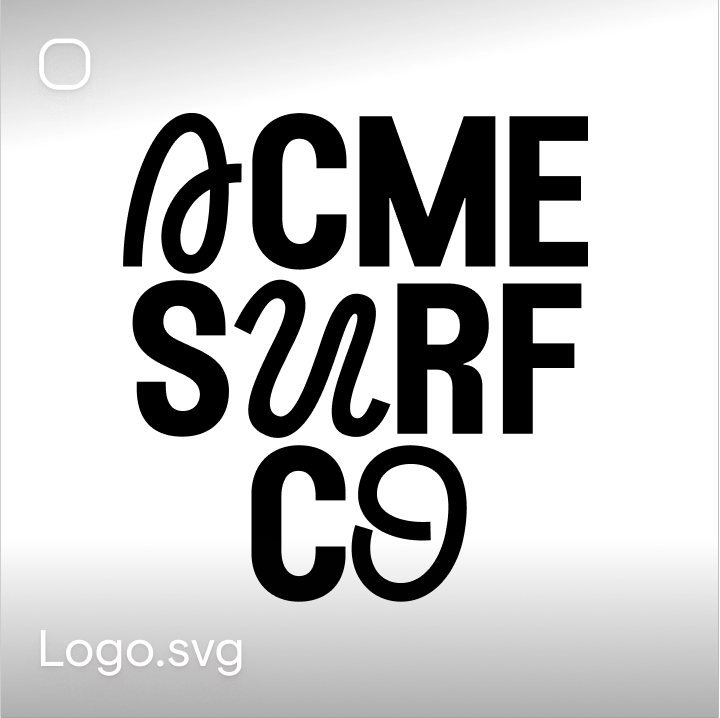What is UGC?
User-Generated Content (UGC) refers to any content—text, images, videos, reviews, and more—created by consumers or influencers, rather than the brands themselves. Its genuine and relatable nature makes it a powerful tool for building trust and fostering engagement among audiences. With a wide variety of platforms ranging from social media, especially TikTok and Instagram Reels, to blogs and review sites, UGC offers a level of versatility that other marketing channels often can't provide. This flexibility allows brands to leverage UGC to complement and bolster their existing marketing strategies.
What is a Creative Feedback Loop in Marketing Strategy?
In the context of marketing and specifically UGC, a creative feedback loop is a cyclical process that brands use to ensure continuous improvement and alignment of content with their overall goals. This loop involves several stages: brief, review, approve, measure, and adjust. Each step allows brands to refine the UGC, thus enhancing its effectiveness in their broader marketing strategies. Having a well-refined creative loop is especially important with the UGC marketing, as Content Creators can and should post content regularly to stay relevant for their audiences.
Read more: Success Story – How VIBAe supercharged marketing content production with Focal
Integrating UGC into Your Marketing Strategy Through Creative Feedback Loops
Recognizing the need for UGC Content
Before integrating UGC into your existing marketing strategy, it's essential to assess if utilizing UGC could provide a valuable avenue for engaging with your audience. Are you aiming to increase brand awareness or change the way your brand is perceived? Where do your customers typically engage with and consume media? If your customers are actively consuming media in spaces where UGC creators thrive, and there's a lively ecosystem of UGC content creators in that domain, it could be worthwhile to explore whether UGC can provide an extra boost towards reaching your marketing objectives.
Initiating the Feedback Loop: Finding and Briefing UGC Creators
The second phase of the creative feedback loop involves identifying potential UGC content creators and providing them with a comprehensive brief. Social media platforms, specialized online communities, forums, and crowdsourcing platforms serve as invaluable assets for discovering individuals capable of crafting authentic content that aligns with your brand and captivates your audience. To truly comprehend who the most fitting spokespersons are in your niche, it's necessary to immerse yourself in the content and understand the discourse led by authorities in your field.
Once potential UGC content creators are pinpointed, it's important to offer them a detailed brief and ensure a formal agreement is in place. This guarantees a shared understanding of the content expected from the creator, and how the brand can employ it within its marketing strategy.
Related: Three ways to improve your creative briefing process
Reviewing and Approving UGC Assets
The next stages in the loop are reviewing and approving. This process entails evaluating the UGC for alignment with brand guidelines and ensuring technical quality. Additionally, brands must secure permissions and address potential copyright issues to safeguard themselves from legal complications.
Documenting your UGC in your Asset Library
Once your UGC is created and approved, it's essential to have an organized storage system, often referred to as an asset library. This database should be easily accessible, searchable, and allow for effective categorization of content by type, theme, or any other relevant parameter. By maintaining a well-structured asset library, you can swiftly locate specific pieces of UGC when needed, streamline your content marketing workflow, and ensure that valuable user-generated content is readily available for future campaigns.
Monitoring and Measuring UGC Performance
Measurement stands as the fifth integral stage in the creative feedback loop, serving as the basis for assessing the performance and impact of UGC. It requires the careful tracking and analysis of key metrics such as audience engagement, growth rates, and conversions attributable to the user-generated content. The insight gleaned from these measurements is invaluable for determining the efficacy of UGC and pinpointing areas that could benefit from enhancements. It's prudent to broach the topic of these metrics with content creators during the initial briefing and discussion of collaboration specifics. This collaborative approach ensures aligned expectations and goals. Furthermore, integrating this data into your asset library could significantly enhance future campaign planning and performance optimization, fostering a consistently evolving and improving UGC strategy.
Refining the UGC Process
The final stage is adjustment, which involves refining the UGC strategy based on the insights gathered from the measurement stage. This continuous refinement process ensures that your UGC aligns with your evolving marketing strategy and audience preferences.
Balancing Value Creation and Challenges in UGC
UGC, although valuable, comes with its own set of challenges. These include maintaining quality control, managing negative feedback, and addressing legal concerns. However, a well-managed creative feedback loop can help overcome these challenges, creating value for all stakeholders involved.
Conclusion: UGC and Your Marketing Strategy
To fully leverage UGC in your existing marketing strategy, implementing a creative feedback loop is key. This continuous cycle of briefing, reviewing, approving, measuring, and adjusting ensures that your UGC aligns with your broader marketing goals, thus allowing you to unlock its full potential. As marketing evolves, so too will the methods we use to engage our audiences—make sure your brand isn't left behind.
FAQs
What are creative feedback loops in UGC?
Creative feedback loops in UGC are cyclical processes that allow brands to continually improve user-generated content through consistent review, approval, measurement, and adjustment stages.
How can brands find UGC creators?
Brands can find UGC creators by leveraging social media platforms, especially TikTok and Instagram, niche online communities, forums, and crowdsourcing platforms.
Why is the UGC approval process important?
The UGC approval process is crucial for ensuring content quality, alignment with brand guidelines, and addressing legal issues to maintain brand reputation and avoid potential complications.
How can brands monitor UGC performance?
Brands can monitor UGC performance by tracking key metrics like engagement rates, audience growth, and conversions tied to user-generated content.
What is Focal?
Focal is a creative asset management platform perfect for asset-heavy teams. With Focal, you can ship effective ads 10x faster.
Our key features are an AI-powered search for creative assets, advanced media mockups, and collaborative docs designed for marketers. All features in Focal are seamlessly connected with Slack and Figma, so you don't need to waste time on manual copy+paste.




















